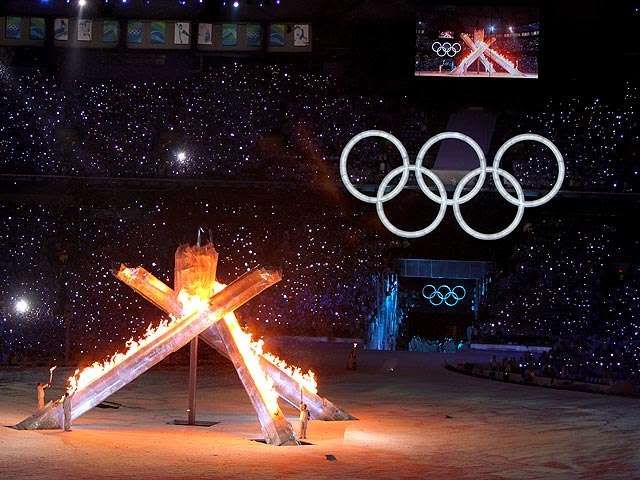 |
as though greeting the spectators. Native dancers
from around the country danced underneath them.
 |
- Natives in B.C. - Part I: Native Prominence in the Vancouver Olympics
- Natives in B.C. - Part III: Land Claims and Treaties in B.C.
The Opening Ceremonies of the Vancouver Olympics showed us all the dynamics of the British Columbia native land claims movements. There had been hints cropping up over the years about the natives’ influence in the Olympics. The issues essentially boil down to the B.C. government accommodating four native tribes’ request that since the Olympics were being held on their land, they be present in as many decisions and programs as possible.
Four native tribes (or First Nations as they prefer to be called – and they never call themselves simply Canadian), the Squamish, Musqueam, Lil'wat and Tsleil-Waututh, were given unprecedented importance. Their chiefs were treated as national dignitaries, sitting right behind the Governor General.
At the beginning of the ceremonies, a member of each of these four tribes greeted the stadium in English, in French and in his (there was one woman in the group) respective native tongue. Four giant totem pole like figures with arms stretched out, carved as though in ice, rose from the stage, mimicking the four host nations’ greetings. These figures remained on the stage as dozens of natives from around the country entered the stage, performing their dances. These figures then retreated down into the stage, as other activities resumed on the giant stage.
Everything went smoothly until that very last, most important, moment. Those totem pole figures were to be replaced by four conduits for the Olympic flames that were being carried by four carefully chosen Canadian athletes. Each athlete was to ignite a conduit, and the flames from these four sources were to travel up to a single cauldron in the middle.
One of the four conduits never made it from under the stage. The symmetry and the magic of the show were broken. And I could only read omens out of that failed ending.
Four natives, who behaved with the confidence of true landowners, aided by menacing giant ice “spirits” were later replaced by four Canadians that represent the current country. The four conduits, replacing the four totem pole figures, lost their strength and symmetry when one failed to rise. Is that what Canada is becoming, slowly and compliantly losing its structures and foundations?
It was disconcerting and alienating to watch. It is as though we were reversing the Canadian experience, and relinquishing the country acre by acre, until we reach the moment a couple of hundred of years ago when the first settlers came to Canada to boldly start a new, and astonishing enterprise of building a brand new country. We now seem to be striving for the moment before that grand arrival.
What happened at the ceremonies should be a wakeup call for Canada. This is another in a series of acquiesces which is slowly diminishing the country, both culturally and geographically. A country which holds multiculturalism, high levels of immigration and of course these persisting native land claims as the epitome of Canadianness surely has a very shaky future.
